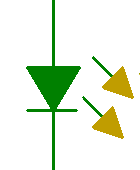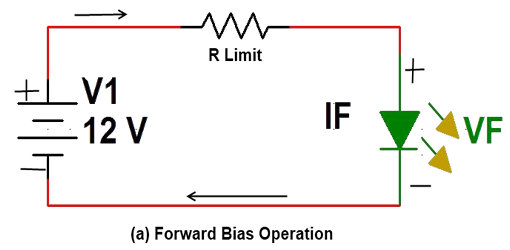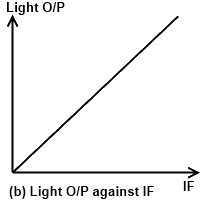LED - Light Emitting Diode
A type of diode that emits light when there is forward current. The back operation of the LED is as follow.
When the diode is forward bias, electrons cross the PN junction from N-type material and recombine with holes in P-type material free electrons are in the conduction band and at a higher energy level then the holes in the valence band. When the recombination takes place, the recombining electrons release energy in the form of heat and light. The process of releasing light energy by the recombination of electrons in a semiconductor is called elector luminance.
Various impurities are added during the doping process to establish the wavelength of the emitted light. Symbol of LED is shown below.

LED’s are made of Gallium arsenide (GaAs), Gallium Arsenide Phosphate (GaAsp) or Gallium Phosphate (Gap). Silicon and germanium are not used because they are essentially heat producing materials and are very poor at producing light.
LED Biasing
The forward voltage across an LED is considerably greater than for a silicon diode. Typically the maximum (Vf) forward voltage for LED’s is between 1.2 volt and 3.2 volt, depending on the device. The LED emits light and response to a sufficient forward current as shown in figure below.


The amount of light is directly proportional to the forward current.
LED Display
One common type of seven segment display consists of LED arranged as shown in figure. Each segment is an LED that emits light when there is current through it. The common anode arrangement requires the driving circuit to provide a low level voltage in order to activate a given signal, the LED is turn on and there is current through it.
